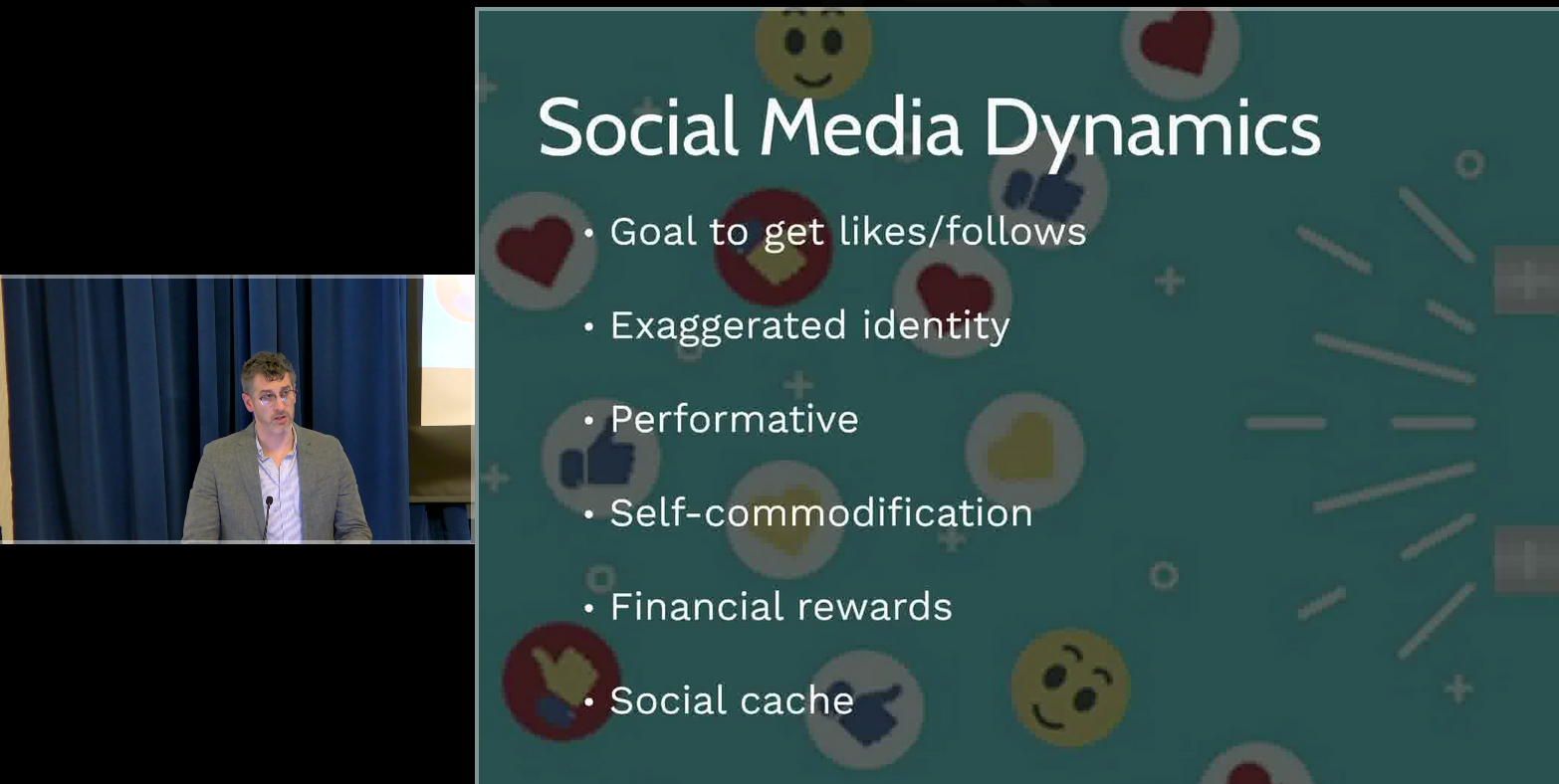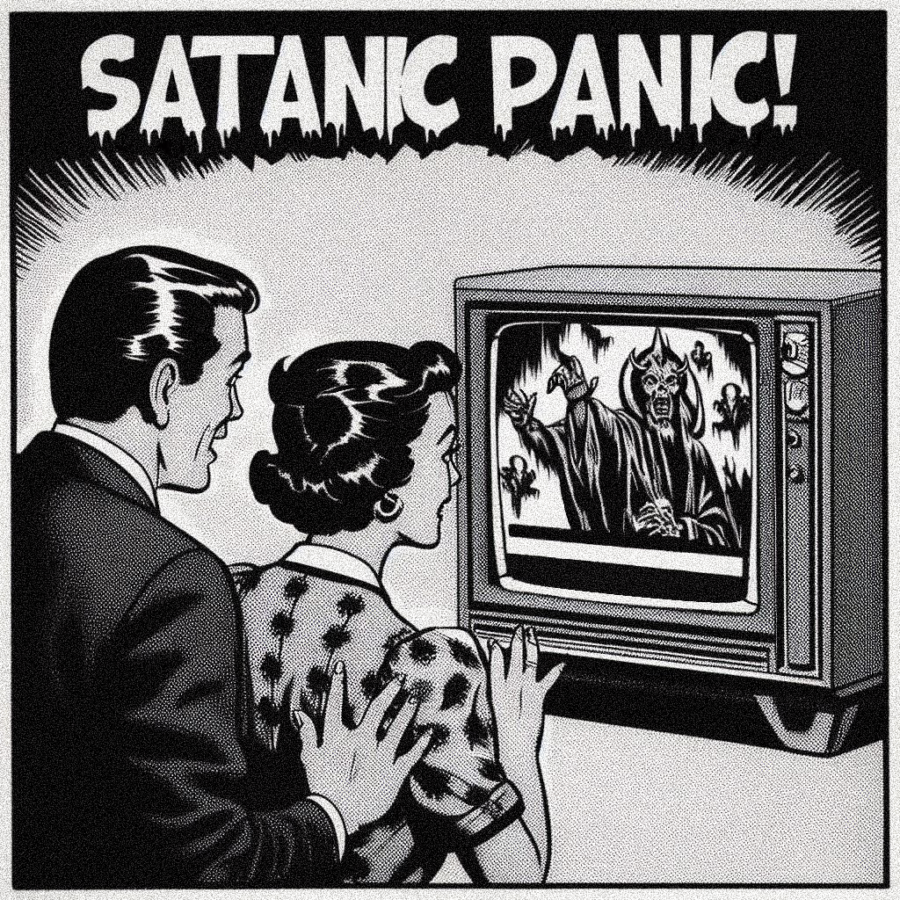Note: Discussion of this topic can be heard in a recent podcast posted on Lucien Greaves’ Substack and Patreon pages
Earlier this year, the International Society for the Study of Trauma and Dissociation (ISSTD), a mental health organization notorious for promoting pseudoscience and Satanic Panic, unceremoniously kicked out a member of their Board of Directors, Katie Keech, ostensibly due to their “personal relationship with a leader of an organization that has harassed the ISSTD and its staff and members for many years.” This is presumed to be in reference to our campaign.
The “leader” in question had no relation to Grey Faction leadership – in fact, they had never interacted with any Grey Faction spaces, forums or pages. They were a local division head and an active member of The Satanic Temple’s (TST) Sober Faction campaign. To be clear: They were not a leader within TST at the time of Keech’s removal, and they never had anything to do with Grey Faction’s campaign. Keech was removed from the ISSTD Board of Directors – a move apparently spearheaded by 2023 president Michael Salter – for the mere crime of knowing a TST member. This tepid connection, Salter allegedly concluded, was evidence of a “psyop.”
But Keech’s removal may have had more to do with a different matter altogether. Keech, who has apparently been diagnosed with a dissociative disorder, reported being ostracized within the ISSTD for speaking out against a video put out in February by an ISSTD affiliate at McLean Hospital which implied specific content creators are “imitating” dissociative identity disorder (DID) for the purposes of making money, earning social capital, and increasing their popularity on social media platforms. The video reportedly resulted in the harassment of some of the creators.

The purpose of the video was to defend the trauma model of DID – the theory that DID is primarily a response to severe trauma – and distance themselves from the growing community of online social media users who publish content on DID, as well as from “endogenic systems” who see themselves as having multiple personalities that were not created in response to trauma. The ISSTD has refused to acknowledge the shortcomings of the trauma model for decades, and has stuck to the claim that DID patients should be expected to be ashamed of their condition and engage in significant efforts to hide it. Contrary to the trauma model and the subsequent expected shame, many members of the DID community proudly display their alter personalities on social media, garnering billions of views for hashtags such as #DID. Rather than update and revise their understanding of what DID is and its causes, the ISSTD is doubling down on the trauma model by suggesting these DID content creators (and endogenic systems) are faking it. To make matters worse, a panel similar to the McLean Hospital presentation which took place at an ISSTD virtual conference in October 2022 allegedly included specific references to a DID content creator who had by that point committed suicide.
The DID community at large has been at odds with the ISSTD for years, including as a result of the ISSTD’s long history of mistreating DID patients, but implying that DID content creators are merely “imitating” DID is causing significant uproar.
When Keech voiced the concerns of the DID community, they were met with significant hostility, much of which reportedly came directly from Salter. The timing coincided with the ISSTD’s 2023 annual conference, where Keech was set to be awarded a fellowship. Instead, they were told they would not be able to attend the conference unless they signed an NDA, which they refused to do. A couple weeks later, Salter allegedly accused them of associating with “false memory orgs” (presumably this campaign) on the flimsy basis of their loose affiliation with a TST member and had Keech, who was on the ISSTD’s Board of Directors, removed from the ISSTD altogether.
This recent chaos underscores the ISSTD’s paranoia, their refusal to update their understanding of DID in light of a mountain of evidence against the trauma model, and their willingness to throw DID patients under the bus in a feeble and misguided attempt to maintain their legitimacy in the dissociative disorders field.
It is well established that the vast majority of those diagnosed with DID do not produce their signs and symptoms intentionally, do not merely “imitate” DID, and do not fake their symptoms. (One major exception is in forensic contexts, where an accused murderer, for example, might blame an alter personality for the crime(s) in order to escape culpability.) But the ISSTD saw fit to accuse members of the DID community of doing just that rather than consider, for example, that times change and people with DID who display their alters on social media may simply not feel ashamed about their condition.
The ISSTD would do well to become familiar with a new transtheoretical model of DID, which incorporates components of the trauma model and the sociocognitive model (which argues that DID is primarily a result of social, cultural, and cognitive variables like fantasy proneness, not trauma) to form a comprehensive view of DID informed by decades of multifactorial studies. The transtheoretical model posits that there are likely multiple pathways to the development of a dissociative disorder, marked by variables including sleeping difficulties, intrusive thoughts, poor self-regulation, distress, fantasy proneness, trauma, attribution errors, as well as social and cultural factors. That is, under this model, dissociative disorders like DID are not merely caused by severe trauma inflicted upon an individual prone to dissociation, as the trauma model and the ISSTD claim. Instead, DID is probably the result of complex interactions between several variables, and may develop in the complete absence of a history of trauma even if trauma is a risk factor.
The implications of this new model are severely threatening to the ISSTD’s position in the field. If DID can develop without trauma, it does not make sense for clinicians to insist their DID patients recover abuse memories that the trauma model implies must be there – a hazardous endeavor that often results in false memories of abuse. If the ISSTD were to accept that trauma is just one of many possible variables in the etiology of DID, they would have to update their treatment methods accordingly, perhaps to focus more on issues of sleep, intrusive thoughts, self-regulation, and other important clinical considerations.
Of course, such a change in treatment methods from endlessly digging for trauma to actually addressing DID patients’ psychological distress would help the patients immensely, but the ISSTD isn’t going to do that. They determined that they had it all figured out decades ago. According to ISSTD co-founder George Greaves, Richard Loewenstein, another prominent member of the ISSTD, stated, in reference to DID (then known as multiple personality disorder): “Never in the history of psychiatry have we ever come to know so well the specific etiology of a major illness, its natural course, its treatment.”(p. 81) Loewenstein stated this in 1989, just nine years after the disorder was first codified in the DSM. He was right about the field of psychiatry having never developed a complete understanding of a major illness so quickly, he was just wrong that such a thing was done in the case of DID. Colin Ross similarly foreclosed on any further progress in genuinely understanding what causes DID and how to treat it. In his introductory address to the ISSTD’s 1993 annual conference, he proclaimed: “In a sense, the whole line of scientific development is just fleshing out and validating the original perceptions of clinicians like Cornelia Wilbur, the clinician for Sybil,” and that “[t]here is no treatment outcome in psychiatry that comes anywhere near the efficacy, or the clinical meaning, or the drama of a successfully treated case of MPD.”[1] Of note, Sybil is now widely considered debunked since the publication of the book Sybil Exposed by investigative reporter Debbie Nathan.
The reality is no empirically supported treatments for DID exist. Those who see themselves as having multiple personalities and seek out treatment are at risk of being subjected to pseudoscientific and harmful therapies, some of which may exacerbate the condition instead of alleviating it. Treatment as usual is risky and controversial.
Instead of recognizing the shortcomings of the trauma model and the urgent need for better treatment methods, the ISSTD would rather focus on widely discredited conspiracy theories. By promoting various conspiracy-based narratives, the ISSTD fosters an environment of fear and mistrust, particularly within the DID community. These beliefs can and do cause distress and paranoia – much like what we’re seeing within the ISSTD, which is so concerned about being exposed by Grey Faction again that any member’s perceived connection to The Satanic Temple is seen as proof of involvement with this campaign. Under Salter’s presidency, the ISSTD is tearing itself apart.
Despite the ISSTD facing extensive controversy within the DID community, many DID creators on social media still turn to the ISSTD as a credible source of information and subsequently pass on this information to others. Popular narratives include the conspiracy theory that DID is caused by Satanic ritual abuse, that DID is a sign of repressed or dissociated memories, and that some people diagnosed with DID have been programmed in secret mind control experiments.
These ideas do not exist in a TikTok vacuum – they were promoted at the ISSTD’s professional conferences, presentations, and in speeches for decades and continue to be extremely popular areas of discussion within the organization. Many DID creators claim to have been mind controlled in specific ways, yet do not know where these ideas come from (or that those who originally conceived these ideas refuse to comment on or substantiate them).
Resistance to alternative models of DID in lieu of accusing patients of faking DID has become commonplace. The ISSTD’s official statement posits that Grey Faction “has declared its animosity not only to the ISSTD but to the entire dissociative disorders field.” This is incorrect, and the implication that the entire dissociative disorders field exists within the insular bubble of the ISSTD and the trauma model of DID is insulting to the serious researchers and clinicians who study and treat dissociation outside of it.
At the end of the day, it should not be surprising that an organization dedicated to fostering and spreading outdated conspiracy theories instead of improving the lives of patients is crippled by paranoia and suspicion. Incapable of seriously listening to the community they’re meant to serve, unwilling to follow the science, and paralyzed by fear of being exposed by Grey Faction yet again, they’re turning on themselves and headed for destruction. We welcome it.
References

